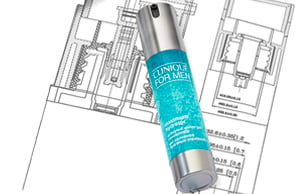Polypropylene (PP) is made from propene/propylene monomer and a linear hydrocarbon resin, having chemical formula (C3H6)n. PP is an inflexible and crystalline thermoplastic used generally in regular products, including packaging trays, battery cases, household products, and so forth. The annual U.S. consumption volume of PP is approximately 37 billion pounds and is second only to polyethylene.
Properties of Polypropylene (PP)
Polypropylene (PP) comes in many different grades which offer a wide range of properties. Some general characteristics of PP include; good tensile and impact strength, high chemical resistance, relatively low cost, and versatility.
PP has a glass transition temperature of approximately -20 degrees Celsius, which makes it flexible at room temperature. It also has a relatively high melting point of approximately 165 degrees Celsius. PP is a semi-crystalline material that has a relatively high crystallinity of 50%-85%. This accounts for its translucency or hazy appearance in its natural form. The crystalline regions refract the transmission of light through the PP matrix and destroy clarity. Clarified grades of PP are available for applications that require excellent contact clarity.
Applications of Polypropylene (PP)
Polypropylene (PP) is flexible and is easily processed. PP typically does not have great UV resistance, but a clear protective topcoat can be applied to packages made from PP. These combined properties make PP a viable and cost-effective material for high production volumes. PP is used in a wide variety of applications, including, but not limited to automotive, agriculture, medical / healthcare, packaging, fibers, building and construction, leisure / outdoors.
How to Recycle Polypropylene (PP)?
Polypropylene (PP) is 100% recyclable. Its recycling cycle is carried out by melting waste plastic to 250°C to dispose of pollutants. After that, the expulsion of residual molecules under vacuum and solidification at almost 140°C takes place.
The recycled PP can be mixed with pure PP at a rate up to half. The main difficulty in PP recycling is identified with its amount consumed. As of now, almost 1% of PP bottles are recycled with respect to the 98% recycling rate of PET and HDPE bottles together.
If we talk about its chemical toxicity, the utilization of PP is viewed as safe on the grounds that it does not have any exceptional impact in terms of occupational health and safety.








